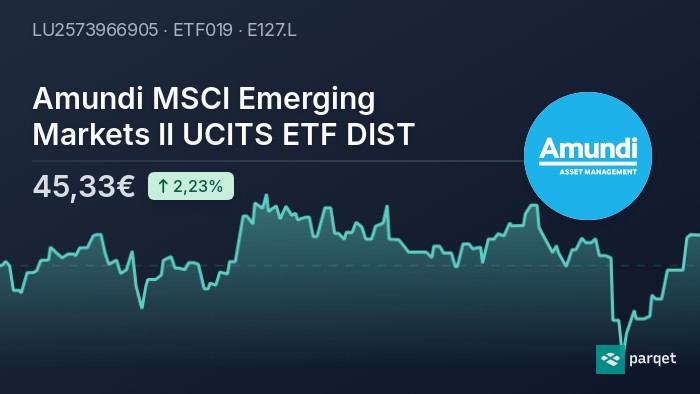What Are Flood Alerts And How Do They Work?

Table of Contents
What is a Flood Alert? Different Types of Flood Warnings
A flood alert is an official warning issued by meteorological and hydrological agencies to inform the public about the potential or occurrence of flooding in a specific area. These alerts are crucial for timely preparation and evacuation, minimizing the impact of floods. However, it's important to understand the different types of flood warnings, as the urgency and required actions vary significantly.
The primary types of flood alerts include:
-
Flood Watch: This indicates that conditions are favorable for flooding to develop. While flooding isn't imminent, it's possible, and people should monitor the situation closely and be prepared to act if necessary. This is a time to review your emergency plan and ensure your supplies are ready.
-
Flood Warning: A flood warning means flooding is occurring or is imminent. Immediate action is required to protect life and property. Evacuation may be necessary. This is the most urgent type of flood alert.
-
Flood Advisory: A flood advisory signifies that minor flooding is occurring or is expected. While less severe than a warning, it still necessitates caution and awareness. You may experience some localized flooding, and travel could be impacted.
Beyond these general categories, we also see specific types of flood alerts based on the source of the flooding:
- River flood alerts: These focus on rising river levels and potential overflow.
- Coastal flood alerts: These pertain to flooding caused by high tides, storm surges, and coastal storms.
- Flash flood warnings: These are issued for sudden, rapid flooding, often in response to intense rainfall.
How Do Flood Alert Systems Work?
Effective flood alert systems rely on a sophisticated network of monitoring, analysis, and dissemination. Let's break down the process:
-
River and Rainfall Monitoring: A vast network of sensors, rain gauges, and weather radar continuously monitors river levels, rainfall intensity, and other relevant hydrological data. This data is crucial for predicting potential flooding.
-
Data Analysis and Forecasting: Advanced meteorological and hydrological models analyze the collected data to predict the likelihood and extent of flooding. These models consider factors such as rainfall intensity, soil saturation, and river capacity. Flash flood warnings, in particular, require extremely rapid data processing and analysis.
-
Alert Dissemination: Once a threat of flooding is identified, flood alerts are disseminated through various channels to reach the public. This includes:
- Weather apps (e.g., AccuWeather, The Weather Channel)
- Text message alerts (through emergency alert systems)
- Sirens and public address systems
- Television and radio broadcasts
- Official government websites
Agencies like the National Weather Service (in the US) and equivalent organizations in other countries (e.g., the Environment Agency in the UK) are responsible for issuing these alerts. The accuracy and timeliness of these alerts are critical to their effectiveness. For example, accurate UK flood alerts ensure residents can prepare adequately.
How to Prepare for and Respond to a Flood Alert
Being prepared for a flood can significantly reduce its impact. Here's a checklist:
Preparation:
- Develop a family evacuation plan, including designated meeting points and escape routes.
- Create an emergency kit containing essential supplies like food, water, medications, flashlights, and a first-aid kit.
- Identify safe locations to evacuate to, such as higher ground or designated shelters.
- Protect valuable possessions by moving them to higher levels or storing them in waterproof containers.
Response:
- Flood Watch: Monitor weather reports closely, review your evacuation plan, and gather your emergency supplies.
- Flood Warning or Advisory: Move valuable items to higher ground. If advised to evacuate, do so immediately and follow instructions from local authorities. Avoid driving through flooded areas, as even shallow water can be dangerous. Follow all evacuation procedures.
Improving Flood Alert Effectiveness: Technology and Community Engagement
Advancements in technology play a vital role in enhancing the accuracy and timeliness of flood alerts. The use of AI and machine learning in analyzing vast amounts of data is improving prediction accuracy.
Community engagement is equally crucial. Effective communication strategies are vital to reach vulnerable populations and ensure that everyone understands the meaning and urgency of different flood warnings. Improving community awareness and preparedness through educational programs and community outreach initiatives is essential for minimizing the impact of floods.
Conclusion
Understanding flood alerts—including the distinction between flood watches, flood warnings, and flood advisories, as well as the specifics of river flood alerts, coastal flood alerts, and flash flood warnings—is crucial for safety. These alerts rely on sophisticated monitoring and forecasting systems, but their effectiveness is enhanced by individual preparedness and community engagement. Sign up for flood alerts in your area today through your local weather service or emergency management agency's website. Don't wait for a severe weather alert to act. Heeding flood warnings can save lives and protect your property. Take action now to ensure your family's safety and be prepared for the potential of future flooding.

Featured Posts
-
 Trumps Trade Threats Gold Prices Climb On Renewed Uncertainty
May 25, 2025
Trumps Trade Threats Gold Prices Climb On Renewed Uncertainty
May 25, 2025 -
 Visok Standard Penzionera Price O Bogatstvu I Vilama
May 25, 2025
Visok Standard Penzionera Price O Bogatstvu I Vilama
May 25, 2025 -
 Inzicht In De Recente Marktdraai Europese Aandelen
May 25, 2025
Inzicht In De Recente Marktdraai Europese Aandelen
May 25, 2025 -
 Amundi Msci World Ii Ucits Etf Usd Hedged Dist A Guide To Nav Calculation And Analysis
May 25, 2025
Amundi Msci World Ii Ucits Etf Usd Hedged Dist A Guide To Nav Calculation And Analysis
May 25, 2025 -
 La Repression Chinoise En France Temoignages Et Analyses
May 25, 2025
La Repression Chinoise En France Temoignages Et Analyses
May 25, 2025
Latest Posts
-
 Swiateks Winning Streak Continues Madrid Open Victory Over Keys De Minaurs Departure
May 25, 2025
Swiateks Winning Streak Continues Madrid Open Victory Over Keys De Minaurs Departure
May 25, 2025 -
 Madrid Open Update De Minaurs Early Exit And Swiateks Dominant Win
May 25, 2025
Madrid Open Update De Minaurs Early Exit And Swiateks Dominant Win
May 25, 2025 -
 Iga Swiatek Triumphs In Madrid Keys Defeated In Straight Sets
May 25, 2025
Iga Swiatek Triumphs In Madrid Keys Defeated In Straight Sets
May 25, 2025 -
 Alex De Minaurs Madrid Open Exit Straight Sets Defeat And Swiateks Victory
May 25, 2025
Alex De Minaurs Madrid Open Exit Straight Sets Defeat And Swiateks Victory
May 25, 2025 -
 Philippine Tennis Star Eala Set For Paris Grand Slam
May 25, 2025
Philippine Tennis Star Eala Set For Paris Grand Slam
May 25, 2025
